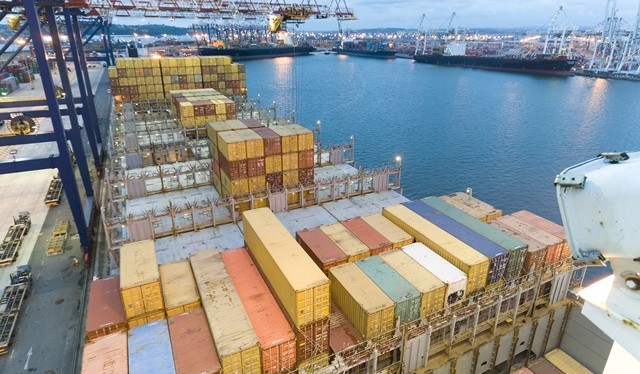Indian MoU and Tokyo MoU have announced the results of the Concentrated Inspection Campaign (CIC) on Cargo Securing Arrangements which conducted from September 1st to November 30rd, 2016 to verify compliance with SOLAS requirements.
Specifically, the purpose of this CIC was to verify that there was compliance with the procedures and measures regarding cargo securing arrangements on board ships and that they are meeting applicable requirements of the SOLAS and related guidelines. During the campaign period, MoU Authorities inspected within the resources available, as many ships as possible in conjunction with routine port State control inspections.
Port State Control Officers (PSCOs) applied a questionnaire listing eight selected areas to be covered during the concentrated inspection. The areas included cargo securing manual, familiarization with the cargo securing manual, lashings/fittings, sufficient availability of cargo securing devices onboard, and follow of the Cargo Safe Access Plan.
Results
Indian MoU
A total of 667 inspections related to CIC have been conducted to applicable vessel during CIC period, resulting three (3) detentions. Two (2) general cargo/multipurpose type vessels and one (1) container, found with detainable deficiencies applicable to Cargo Securing. A total of five (5) CIC related detainable deficiencies found as follows:
| Code | Description | Total |
| 6101 | Cargo Securing Manual | 2 |
| 6104 | Lashing Material | 3 |
Tokyo MoU
A total of 9560 inspections related to CIC have been conducted to applicable vessels during CIC period resulting nine (9) detentions. Four (4) general cargo/multipurpose type vessels, four (4) containers and one (1) bulk carrier had detentions caused by CIC related detainable deficiencies. A total of ten (10) detainable deficiencies related to CIC have been marked:
| Code | Description | Total |
| 6104 | Lashing Material | 7 |
| 6107 | Cargo Operations | 3 |
The small percentage of detentions related to CIC shows that vessels were well prepared to face the inspections and relevant documentation, certification, material & equipment were in appropriate condition.
Furthermore, as familiarization with equipment was one of the targets of the Campaign, results revealed that crew members are familiar with procedures and equipment required for Cargo Securing handling. This an additional advantage for Concentrated Campaigns, as they focus to prepare, train and familiarize crews on related items
Actions required Ship managers should continue to address all items related with cargo securing as appropriate. An effective approved (by Flag State or RO on behalf of it) Cargo Securing Manual should be on board and used by Crew. For Container Vessels a Cargo Safe Access Plan should be implemented as part of securing manual.
Source: SQE MARINE Circular 2017-03






























































